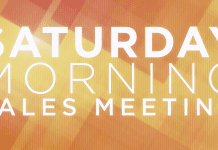On this week’s episode of Kain & Company, David Kain, President of Kain Automotive, talks about creating a substantial onboarding plan so that you can set the right tone for your new crew members and ensure that you are minimizing any potential for mistakes in your process.
VIDEO TRANSCRIPTION:
David Kain: Hello and welcome to Kain & Company. My name is David Kain. I’m the President of Kain Automotive and I appreciate you spending a few minutes with me today. Today we’re going to talk about onboarding new employees. So onboarding, whether it’s a young candidate, a middle aged candidate or an older candidate really is critical and we tend to think about the millennials and some of the challenges there, but there are challenges for all age ranges and it’s important for your dealership to, in any case, create a really substantial onboarding plan so that your team members know from the get go from the recruiting stage all the way through them being on the job longterm, that you’re really dedicated to their future and the development of their skillset so that they can sell more cars and obviously take care of their family.
David Kain: So when it comes to onboarding for an internet or a BDC role, it’s really straightforward and easy if you think about it this way. I would encourage you to get out a clean sheet of paper or if you work better on a computer, bring up a spreadsheet, bring up a word document and just start typing out all of the variables of what the employee needs to know from how to open the door, which place I need to park, where they’re going to have their seat, how to turn on their computer, how to turn off their computer, how to access all of the technology.
David Kain: So as simple as it sounds, we tend to overlook all that and you’ve got this new employee that’s worried about how they look, how they’re coming across to their new team members and we sometimes just gloss over some of those very straightforward fundamentals. So I would get into the nitty gritty details, at least when you’re coming up with your list. So go into the fact that you’re going to go through their compensation. Have a deep explanation of that. What the leadership hierarchy is? Who runs the dealership? Who you’re going to report directly to? If in fact you have any issues with performance or a coworker or any kind of HR type issue, what the roles are and different people and what they’re going to do.
David Kain: So get all those fundamentals out of the way and then start moving into the job function. And what kind of software we’re going to use? How the CRM works, what are the key fundamentals of accessing the CRM? When you are talking to the customer in the showroom, when you are presenting the vehicle, what’s the test driver out? What is the proper Six Position Walkaround? Where am I going to get the product knowledge? Who’s going to teach me? I’m going to get certified by the manufacturer? It’s exhausting when you think about all those things and then we expect that someone’s going to come in, we’re going to sign them with a mentor, team mate that’s busy, that is not trained to do this, and we’re going to hope that they’re going to do a really good job.
David Kain: One thing that I get cracked up on when I listen to some of my friends who are working with millennials, one of them recently said, “If I can get them to come back after lunch on the first day, I know I’ve done something right.” I bet all of us can hit that level of achievement, but how many days can we sustain it? And when you graph this out and you say, “What do you think is the expected absorption rate for any given employee who’s new to the organization, whether they’ve sold cars or not, whether they been in retail or not, whether just come fresh out of school. What do we need them to do to where they feel confident?”
David Kain: And the thing that we like to do is to line out three weeks of training. And the first week we’re looking for awareness. So that’s the goal. At the end of the week, five days in, I want to be able to walk up to that new employee and say, “What do you know about this? What do you know about that?” And they can say, “Well, I’m aware of it, I’m aware of it.”
David Kain: The second week we’re looking for proficiency. So whether we want them to talk on the telephone or we want them to receive inbound phone calls, scheduled appointments with customers, we want to get them to that level of proficiency in that second week. And adult learners, and I know this really, really well because in our training company, we’ve been doing this for 16 years, don’t worry about repeating. Topics take a while to be absorbed. In any given class, be it an hour long or two hours long, they’re probably going to walk out with one or two ideas. So don’t worry about repeating topics until they become proficient.
David Kain: So the third week, we’re looking for mastery. And at the end of that third week we should feel very confident that whether they’re a BDC specialist working with leads and scheduling appointments and helping customers or they’re actually internet salesperson, A to Z and helping the customer all the way through the purchase cycle, we want them to get done on Friday and feel as though that they have mastered the training and they with great confidence can go out there and work independently. I used to be a student pilot and I loved it when they would put in my log book how I had done for the day, what had been doing and I got to the point to where I was able to solo.
David Kain: And what we want to be able to do at the end of that third week is prepare that employee to be a solo provider. One of the cautions I want to throw out to you and automotive is the fact that too often we actually just tried to do on the job training and it freaks our new employees out. Their confidence starts to diminish. We don’t have time to sit there and talk to them and walk them through it, so take the time. It’s something I learned in working… Going to a culture class with the Zappos.com organization that is known for culture, and they solidified in my mind, how critical those first three weeks were.
David Kain: The first three days, the first three hours are all important. We’ve got to make sure that that customer is ready and engaged and able to look at your organization fondly and know that you’ve prepared them for a really optimal career. Take the time to make the list, graph it out. I’d be glad to give you any insights if you want to email me, but thanks a lot for listening. Give it a try and I believe 2020 will be a great year for you if you put the effort into your onboarding plan. Thanks a lot for joining me here today. I’m David Kain and I appreciate it and I’ll see you next time here on Kain and Company.
Speaker 2: This has been a JBF Business Media production.




